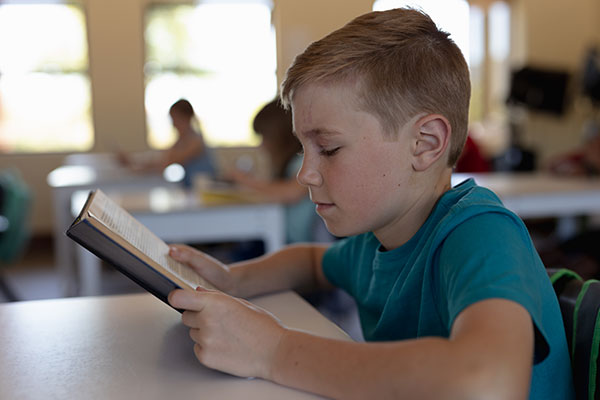Reading stamina is a child’s ability to focus and read independently for increasingly longer periods of time without being distracted or without distracting others.
The goal in a Balanced Literacy classroom is to build the group’s stamina to read for 30 minutes every day. For early readers in preschool, kindergarten and first grade, this may mean reading in two, fifteen-minute periods. Students reading at the second grade level often do not fully engage with a chapter book until they have been reading for 7-10 minutes. Therefore, it is important to build your class’ capacity to read for sustained periods of 20-30 minutes as soon as possible.
Before you can start the process of building stamina, you must have a classroom library to support Independent Reading and a process for students to self-select books and keep a book bin or bag. You must work with your students to develop a minimum level of stamina for your classroom before officially starting Independent Reading or Read to Self.
Your class is ready to begin an “official” independent reading time when they consistently reach the following goals:
Kindergarten: 7-8 minutes of stamina
Primary: 10-12 minutes
Intermediate: 12-14 minutes
You may need to practice building stamina 2-3 times each day during the first few weeks of school to build to this level! The goal is to be able to have two 15 minute independent reading sessions each day in primary and full 30-minute sessions in the intermediate grades by the end of September!

8 Steps to Building Stamina in Your Classroom
1. Explain what stamina is and why it's important.
Students who read self-selected books for 30 minutes every day become better readers and develop wider vocabularies! During their Independent Reading or Read to Self time, the teacher can meet one-on-one or in small groups with students to learn more about their strengths and needs as readers.
2. Set the learning target.
Setting the goal and identifying what is to be taught is critical. Increase the class goal every day, or week, over time until the class is able to read for 30 minutes consistently. Some teachers create a graph to monitor successes over time and have a read-in party when the goal is met.
Examples:
- I can read books from my Book Bag/Bin for _____ minutes without getting up, moving around, or talking.
- I can read books from my Book Bag/Bin for _____ minute, modeling the behaviors on the Independent Reading with Stamina I-Chart.
3. Develop an Independent Reading Stamina I-Chart.
Include how you will launch Independent Reading or Read to Self at the beginning and how you will end. (A quiet signal or timer beeps.)
4. Explicitly teach and model
Show students, actually physically model, what it looks like when students are reading with respectful stamina and what is doesn’t look like! Have the students talk about what you did and didn’t do.
5. Goal setting
Set a class goal to read a specific number of minutes following the agreed upon behaviors outlined in the I-Chart/Anchor Chart. Let the students know that you will use a timer to monitor the set amount of minutes and if one student disengages, the timer will be stopped and that goal setting session is over and you will need to begin again at another time.


6. Practice
Plan to practice at least 2-3 times a day the first few weeks of school to build enough stamina to begin independent reading or Read to Self as soon as possible.
- Place students around the room
- Review the I-Chart
- Set the timer
- Stay out of the way
- Quiet Signal – come back to group when one student disengages*
* The timer must be stopped as soon as one student disengages form the agreed about self-management on your I-Chart. Do not single out the child and use positive tones to reset the goal.
7. Group check-in
Did you meet your goal? Why or why not. Talk about what was easy or hard. Discuss what you need to do to meet the goal next time. Avoid showing frustration to children who may be the cause of missing the goal. This is a class goal.
8. Set a new, higher goal.
Agree on the next steps. Use your Goal Setting Chart or Graph to talk about your goals. Make sure they are realistic and incremental so that you are climbing a staircase to success!
RESOURCES
“The Big Ideas of the Daily 5” by Boushey & Moser, 2012. The Reading Teacher. Vol. 66, p. 172-178
This article is #8 in the twelve-part series, “Getting My Classroom Ready for Balanced Literacy Instruction: Classroom Culture and Environment.”